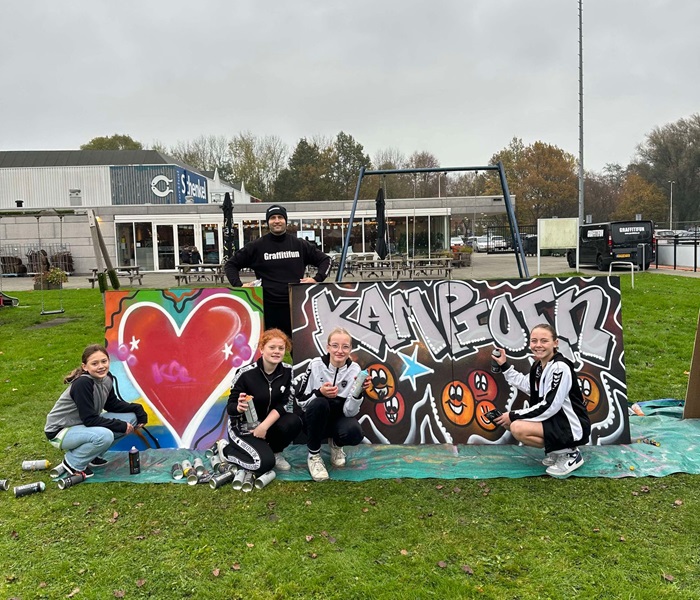
Graffiti, once considered an underground activity, is now finding its place as a respected art form across the Benelux and much of Europe. In cities such as Amsterdam, Paris, Berlin, Brussels and Luxembourg, walls once left blank are being transformed into canvases where communities, companies and schools explore creativity through organized graffiti workshops.
From subculture to mainstream art
In the 1980s graffiti was closely tied to youth culture and often carried a rebellious image. Today it is increasingly recognized as a legitimate form of artistic expression. Municipalities now support projects that use graffiti to brighten public spaces, while educational institutions invite professional artists to teach the basics of spray painting.
The popularity of graffiti workshops shows how far the art form has come. What was once hidden in alleyways now takes place in classrooms, company outings and festivals. Participants discover that graffiti is not only about bold letters and street murals but also about teamwork, imagination and communication.
A growing trend in the Benelux
Nowhere is the movement more visible than in the Benelux. In the Netherlands workshops are booked for a wide range of occasions, from corporate teambuilding to bachelor parties and children’s birthdays. In Belgium schools often include graffiti sessions as part of art education, allowing students to learn about color theory, technique and urban culture. Luxembourg has also embraced the trend, with events where residents can experiment with spray paint on specially prepared walls.
Organizers note that the appeal is broad. Young people are drawn to the energy of graffiti, while adults often discover the joy of creating something unexpected with a can of paint. Parents appreciate that workshops are guided by professionals who ensure both safety and structure. For companies the activity is valued as a way to strengthen bonds between colleagues while producing a shared artwork that can be displayed in the office.
Crossing borders into Europe
The demand does not stop in the Benelux. Across Germany, France and Spain graffiti workshops are also becoming a fixture of cultural life. Festivals feature interactive walls where visitors can paint alongside artists. Tourist destinations offer short sessions for travelers who want to experience urban creativity.
The growing European network of artists has helped spread the trend. Many groups collaborate across borders, sharing techniques and promoting graffiti as a tool for cultural exchange. In some cases workshops are even combined with digital technology, introducing participants to virtual spray paint walls that mimic the real experience without leaving a trace.
Murals and memories
While workshops are central, the influence extends further into everyday life. Murals created during sessions often remain in place, turning once plain walls into community landmarks. Schools decorate playgrounds with student projects, and companies commission professional follow-up pieces to reinforce their brand identity.
For many participants the experience is less about the finished product and more about the process. The sound of the spray can, the smell of fresh paint and the rush of creating something large and colorful together leave lasting impressions. Teachers report that students who rarely engage in traditional art classes often thrive when handed a spray can.
A recognized industry
The rise of organized graffiti has also created professional opportunities. Artists who once painted illegally now find stable work leading workshops, designing murals and training the next generation. In the Benelux several training companies support young artists in building careers that combine passion with employment.
Among them Graffitifun stands out as the largest graffiti workshop company in Europe. With more than forty artists involved, it operates across the continent and reflects how graffiti has moved from the margins into the mainstream.
Looking ahead with more streetart
As graffiti continues to evolve, workshops are likely to remain a central part of its growth. They provide a safe, structured and creative way for people of all ages to connect with an art form that was once misunderstood. With each spray of paint, participants not only add color to walls but also reshape perceptions of what graffiti can be.
From Amsterdam to Brussels, from small schoolyards to international festivals, graffiti workshops are proving that urban art is no longer confined to the streets. It has become a shared experience, a community event and for many a first step into a world of creativity that is here to stay!
Media Contact
Company Name: Graffiti Aanbieders
Contact Person: Michel Steers
Email:Send Email
Country: Netherlands
Website: https://graffiti-aanbieders.nl/
